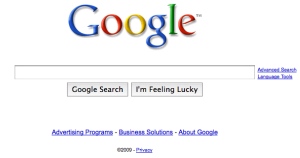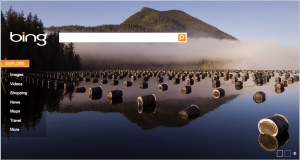
It began with a discussion of ornamentation. As we look around us, the ornament seems to be disappearing. The things we use have been stripped of ornamentation in favor of pure functionality. Form, we are taught, must follow function. Decoration is an unnecessary expense, as it adds nothing to the function of a manufactured thing. Ornament has lost the battle of Return on Investment.
It wasn’t always so, there was a distinct turn. Alain De Botton, in his book “The Architecture of Happiness” explores the moment when engineering and aesthetics collided.
“The answer that eventually emerged was not really an answer; rather, it was an admonishment that it might be irrelevant and even indulgent to raise the question in the first place.
A prohibition against discussions of beauty in architecture was imposed by a new breed of men, engineers, who had achieved professional recognition only in the late eighteenth century, but had thereafter risen quickly to dominanace in the construction of the new buildings of the Industrial Revolution.”
These engineers were building the factories, bridges and railways that would provide the infrastructure for the industrial age. Style simply wasn’t a consideration.
“The philosophy of the engineers flew in the face of everything the architectural profession had ever stood for. ‘To turn something useful, practical, functional into something beautiful, that is architecture’s duty,’ insisted Karl Friedrich Schinkel. ‘Architecture, as distinguished from mere building, is the decoration of construction,’ echoed Sir George Gilbert Scott.
The essence of great architecture was understood to reside in what was functionally unnecessary.”
In 1923, Le Corbusier penned a book called ‘Toward a New Architecture‘ which outlined the principles of this new approach to the design of buildings. Again, from De Botton’s book:
For Le Corbusier, true, great architecture — meaning, architecture movtivated by the quest for efficiency — was more likely to be found in a 40,000-kilowatt electricity turbine or a low-pressure ventilating fan. It was to these machines that his books accorded the reverential photographs which previous architectural writers had reserved for cathedrals and opera houses.
And with that prelude, we arrive at the web search engine and the use and meaning of ornament. There’s an interesting experiment currently being conducted called Blind Search. The creators of this test wonder what happens to a user’s perception of search results when all branding is removed. Google initially established itself by producing noticeably better search results. Now, established as a verb meaning “to search,” does Google still provide results that are visibly superior? The results indicate that Google still leads, but not by as much as you’d think: Google: 41%, Bing: 31%, Yahoo: 28%. And putting the Google brand on any search results increases satisfaction.

In looking at the design of the Google user interface, we see the influence of Le Corbusier. The typographic logo is the only design on the page, and occasionally it is playfully re-imagined to commemorate notable events. Here, form follows function.
In his book, De Botton tries to articulate how we find beauty— the mechanics of what attracts us:
“We can conclude from this that we are drawn to call something beautiful whenever we detect that it contains in a concentrated form those qualities in which we personally, or our societies more generally are deficient. We respect style which can move us away from what we fear and towards what we crave: a style which carries the correct dosage of our missing virtues.”
While we may perceive the Network as vast, complex and opaque— with its simplicity Google’s design provides us with the antidote. Now look at this image of Microsoft’s Bing home page:

Bing’s user interface is decorated with a background image that gives a sense of what it does. I’m fairly certain that the image has no effect on the quality of the search results. Bing is attempting to provide a usage model for the consumption of faceted search results. Queries return both potential facets along with the traditional list of links. Bing is designed with both facets and links in mind, while Google appends facets to the bottom of the link list.
As the facets and links that search engines return become more and more indistinguishable, what is the difference that will make a difference? One could assume that there will always be an engineering innovation right around the corner that will make a significant and visible difference. We like to believe that progress is always linear.
Corporate brand clearly makes a difference, users like a brand name search product. Microsoft’s brand has been held in the background and a new brand has been established. Images have also been used to distinguish Bing. Ornamentation has been exiled for so long, it’s hard to understand how to even value it.
Let’s return again to Alain De Botton:
The buildings we admire are ultimately those which, in a variety of ways, extol values we think worth wile — which refer, that is, whether through their materials, shapes or colours, to such legendarily positive qualities as friendliness, kindness, subtlety, strength and intelligence. Our sense of beauty and our understanding of the nature of the good life are intertwined. We seek associations of peace in our bedrooms, metaphors for generosity and harmony in our chairs, and an air of honesty and forthrightness in our taps. We can be moved by a column that meets a roof with grace, by worn steps that hint at wisdom and by a Georgian doorway that demonstrates playfulness and courtesy in its fanlight window.
Le Corbusier’s aesthetic demanded design be “ascetic and clean, disciplined and frugal.” He had a hatred of any kind of decoration. Google’s engineering aesthetic is a terminal design. Any competitor employing a purely functional design will unintentionally be referencing Google. There’s no way to get radically simpler than Google, and therefore no way to create enough space to allow for differentiation. The only alternative is to move back into ornament, into the decorative, into beauty.

While we may think of computerized search of the internet as a purely functional affair of ONEs and ZEROs, the simple lists of links are being pulled into organic forms by their facets. Human forms of life are surfacing in and through our search queries. Search results will begin to bloom into something that looks much more like a natural form than points and lines in a frictionless space. This moment may mark another turning point…